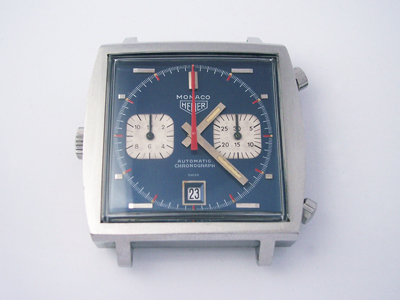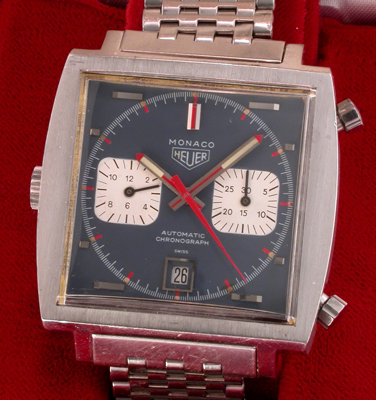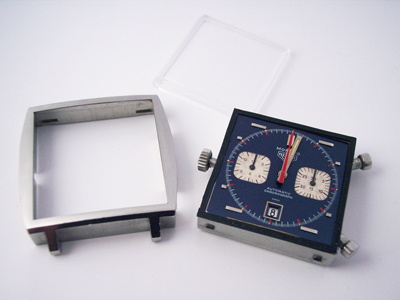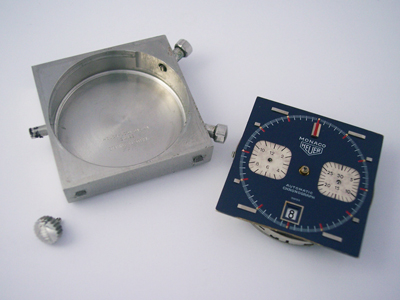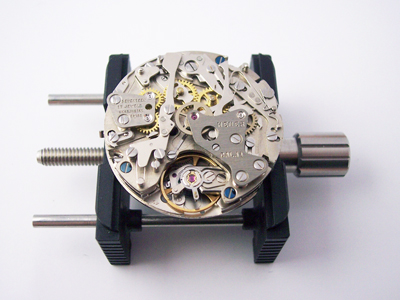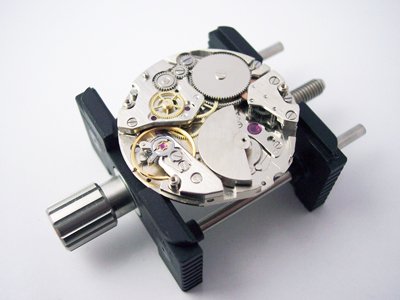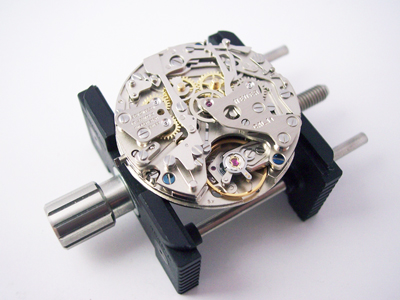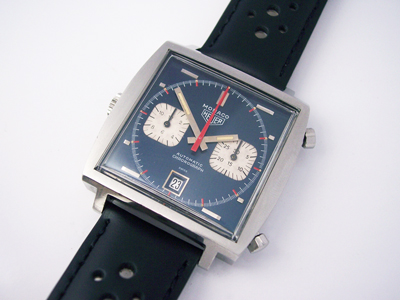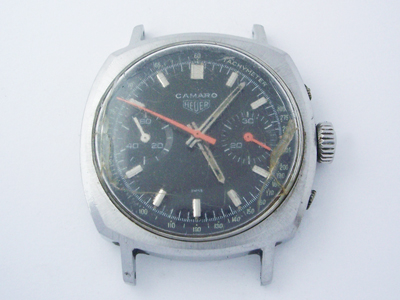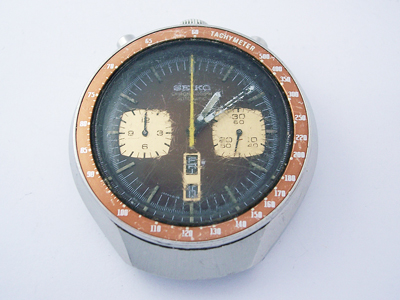A real classic this time on the blog, a vintage Heuer Monaco.
(Click pictures to enlarge)
To many vintage watch enthusiasts this watch will need no introduction, as it is one of the most widely recognised watches in the world. First introduced in 1969, the Monaco was ground breaking for Heuer as it was their first square cased chronograph, and also one of the earliest models to be powered by their new self-winding (automatic) chronograph movement, the Calibre 11.
Produced from 1969 until 1975, the 1133B is the original Monaco, and is highly prized by collectors as only 4500 are thought to have been made. The model in this post is particularly rare, as it has a number of design features used only on the earliest models. Known as the ‘1133B Transitional’ it has a dial with a metallic blue finish, and undecorated hands with a ‘squared off’ profile. In the later models (from 1970 onwards), the dials were painted with a matt blue finish, and the hands were replaced by pointed versions sporting a red stripe.
(Picture: OnTheDash)
Other variations followed, some featuring the simplified Heuer Cal. 15, and manually wound versions were released later in the production run, all powered by Valjoux cam-lever chronograph calibres. Here are a few of the other models.
(Pictures: OnTheDash)
Anyone with an interest in vintage Heuers will surely have seen the pictures of Steve McQueen wearing a Heuer Monaco during the 1971 movie “Le Mans”. Although it had no impact on watch sales at the time, the images of ‘The King Of Cool’ wearing a Monaco have been used heavily from the 1990’s onwards to promote a wide variety of Monaco re-issues and special editions.
For more information on vintage Monaco models, check out Richard Crosthwaite’s excellent site www.heuermonaco.co.uk, and also the home of online vintage Heuer knowledge, OnTheDash.
The watch in this post arrived in fully working condition, though losing 10 minutes per day, which is usually a sign that the movement is ready for a service. As the case is of ‘non-standard construction’ (and is yet another one piece case!), it’s worth taking a closer look.
The first step is to remove the outer shell which clips onto the main case to ensure a watertight seal around the crystal.
With the case separated, the crystal lifts away to reveal the crystal gasket – a source of much heartache to many a Monaco collector, as if left unchecked for many years, the rubber has a tendency to break down and turn into a black sticky mess which seeps onto the dial causing irrepairable damage. Thankfully that has never happened to this watch, the dial is still in excellent condition.
The next step is to split the two piece stem, after which the whole watch can be carefully removed from the inner case.
The movement inside is exactly what you would expect to see in an early Monaco, a Heuer branded Calibre 11 – later models were fitted with the revised Calibre 12, which had a number of technical improvements. The movement looks quite discoloured as you can see, and under the microscope it was obvious that the oil in the oil sinks had congealed – the extra friction undoubtedly being the cause of the poor timekeeping.
For those thinking, “Huh? I thought this was an automatic, where’s the winding rotor?”, the answer is; it’s hidden inside. Rather than the full rotor system seen on the majority of automatic calibres, the Cal. 11 is based on a Buren Cal. 1281 which has a micro-rotor automatic winding system. Here is a picture of the base movement taken during the post-service rebuild.
… and here is the movement fully rebuilt again and looking much improved.
With the movement serviced and the case cleaned, the watch could be rebuilt. Here she is fully assembled.
Rich.
** Many thanks to Andy Ogg for letting me feature his watch on the blog. If you would like to see more of Andy’s vintage Heuers, check out his blog 24Heuer.com. **

